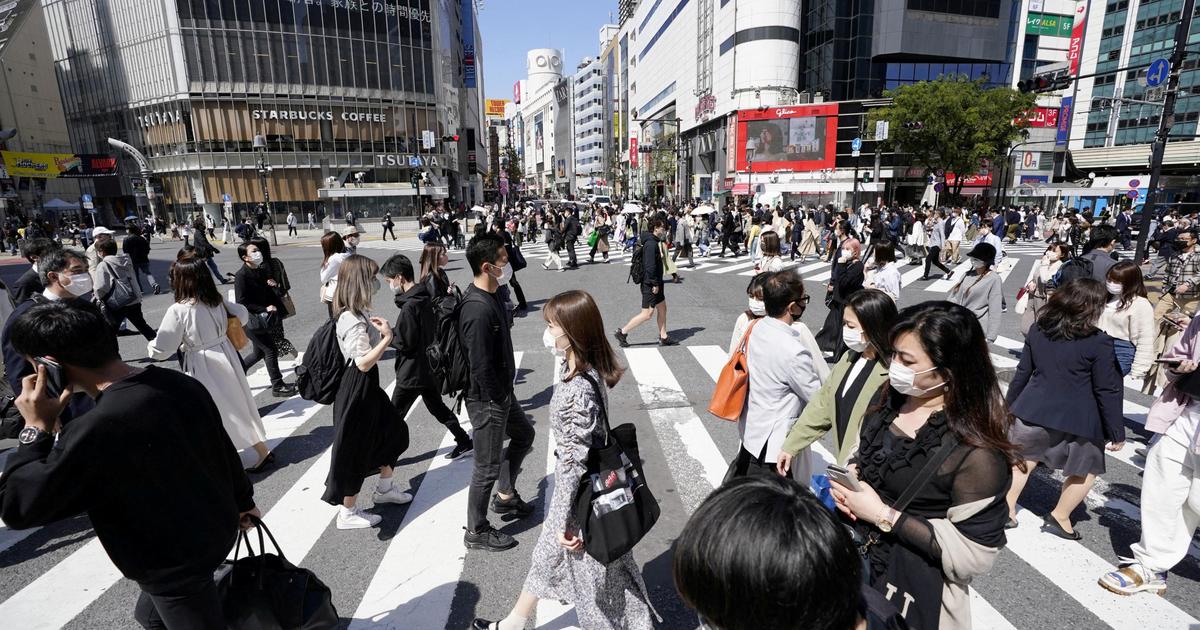The 7th wave is on the rise, but do we really know to what extent?
What if the nearly 100,000 positive cases identified each day (on average) were “10 to 25” lower than the actual number of daily contaminations?
This is what epidemiologist Dominique Costagliola, Inserm 2020 Grand Prix, put forward this Thursday. But this range seems exaggerated.
We will explain everything to you.
What you may have heard
“The data from the United Kingdom shows that the true number of cases at the moment is 10 to 25 times higher than that which is measured”, indicated Dominique Costagliola on BFMTV.
The video snippet was heavily shared, eliciting many reactions.
Some Internet users accuse him of exaggerating, estimating that having 4 million infections in 24 hours on Tuesday (25 * 150,000 cases recorded) would be impossible.
Dominique Costagliola (epidemiologist): "The real number of Covid cases is 10 to 25 times higher than the one we measure" pic.twitter.com/rgrHNgSI9H
— BFMTV (@BFMTV) June 30, 2022
What the UK data says
Since the start of the pandemic, this case count has been known to underestimate the true number of daily infections.
Some people are positive by self-test and are therefore not counted, while others pass completely under the screening radar.
Last January, the scientific council estimated that there were, every day, 2 to 3 times more contamination than positive tests.
Would the gap have widened massively?
Asked by Le Parisien, Dominique Costagliola confirms that the “British data” on which she relies come from the Office of National Statistics (ONS).
This publishes, every Friday, estimates of the real number of daily infections thanks to an epidemiological “model”.
On June 7, for example, there was a ratio of x20 between positive cases and infections (detected or not) in England.
This falls within the range put forward by Dominique Costagliola.
Except that in reality, the positive cases correspond to infections that occurred a few days earlier, the time that the person has symptoms and goes to be tested.
By applying a delay of several days, or by averaging over periods of epidemic growth and decline, statistician Paul Mainwood tells us to arrive at a ratio of x10.
This corresponds to the lower range of Dominique Costagliola's estimate.
What estimate for France?
However, can these data be transposed to France?
Probably not.
In the United Kingdom, “there is now no incentive to get tested or to report, except to the hospital”, tells us Paul Mainwood.
Conversely, in France, the government always recommends “testing yourself at the first symptoms”, as Prime Minister Elisabeth Borne recalled on Tuesday.
Read also7th wave of Covid-19: why the government excludes, “at this stage”, the return of the compulsory mask
The 7th wave is leading to more and more contact cases, pharmacies are bringing out the white screening tents, and 300,000 tests are now carried out every day.
This number fell back in early June to its lowest level since September 2020, but it has just doubled in three weeks.
Thus, one can think that the number of positive cases underestimates the reality less in France than across the Channel.
"The British estimates are the only ones we have," defends Dominique Costagliola, who acknowledges that the ratio is probably lower in France.
His message consisted above all in “remembering that it is wrong to believe in the figure that we are told about our day”, in the sense that it only lists a part of the infections.
But probably not one out of 25. The reality is probably between the x2 or x3 of January and the x10 of today in England.









